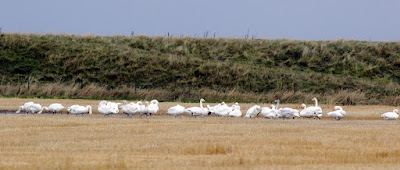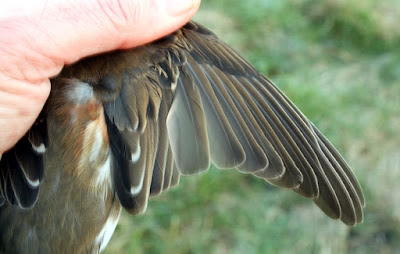I realised I’d not posted in almost a week. In fact I’ve hardly birded in almost seven days since the weather took a severe turn for the worse with almost constant rain and wind. It’s much the same today with yet more forecast for the remainder of the week. So for today here’s filler for the blog until such time as I can get out birding or ringing.
It was last week when deliberating over two very similar looking but geographically separated species the UK Coal Tit and the North American Black-capped Chickadee that I had reason to ponder their respective scientific names - Parus ater and Poecile atricapillus.
For many birdwatchers the scientific names of birds are a bit of a bore, at best a riddle and of interest only to scientists who speak Latin. But as well as a means of allowing people throughout the world to communicate unambiguously about birds they almost always give an insight into the origins of the name. Here are some I gleaned from both the Internet and books.
There’s a question that often crops up on TV quizzes, one designed to trap the unwary. Which bird has the Latin name Puffinus puffinus? The correct but slightly confusing answer is of course Manx Shearwater. In days gone by the word “puffin” was a synonym for a shearwater and not the unrelated seabird Atlantic Puffin, hence it was the shearwater which earned the Latin title of Puffinus puffinus.
The “manx” refers to the species’ former abundance on the Calf of Man a small island lying to the south of the Isle of Man in the Irish Sea, while "shearwater” describes the birds’ mode of flight which skims or shears the water.
Manx Shearwater - Puffinus puffinus
The scientific/Latin name for Wigeon is Anas penelope. I’m somewhat disappointed that the name for such a gorgeous duck should simply mean duck-duck. It’s from the Latin and Greek respectively.
Wigeon - Anas penelope
Would anyone who has slept under a duck down duvet by way of feathers plucked from an Eider duck Somateria mollissima disagree with the Latin meaning “very soft woolly body”?
Eider - Somateria mollissima
Now for an easy one, Barn Owl. Tyto alba simply means white owl. I think we can all agree on that one for the often ghostly apparition.
Barn Owl - Tyto alba
One might think that the rustica element of the Latin name Hirundo rustica refers to the reddish forehead, throat or the often pink underparts of our common Swallow. In fact it means a rural or rustic swallow. The Swallow is a bird which graces our countryside for a few short months of the year. Long may it continue to do so until the politicians succeed in concreting over the entire landscape of England.
Swallow - Hirundo rustica
I’ve not heard of any Bohemian Waxwings Bombycilla garrulus finding their way to the UK this autumn, but if they are around soon I’ll be looking out for the “chattering silk-tails” that their Latin name describes. The Bohemian part of their common name tells us the species’ wandering habits were reminiscent of tribes of gypsies or Bohemians.
Waxwing - Bombycilla garrulus
The Phylloscopus collybita of Chiffchaff breaks down as Phylloscopus a leaf-watcher, and collybita originating from a word meaning money-changer. The clicking, repetitive sound of the Chiffchaff’s song was thought to resemble the sound of coins being clinked together.
That’s a really interesting if somewhat esoteric explanation which may or may not be the truth. Readers should think about that one in the Springtime while watching and listening to a Chiffchaff in the tree canopy.
Chiffchaff - Phylloscopus collybita
There was a Jay Garrulus glandarius in my garden this week, taking a break from raiding the young oak tree in a neighbours garden. Jays are often silent but “acorn-eating chatterer” would apply on many occasions.
Jay - Garrulus glandarius
Please excuse my bout of name dropping today. It's not something I normally do or even like to hear, but hopefully there will be more posts and news soon.
























































.jpeg)







.jpg)












